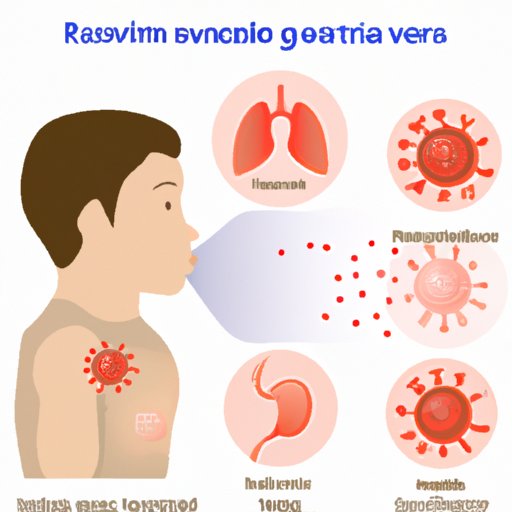
Introduction
Respiratory syncytial virus, commonly known as RSV, is a highly contagious respiratory infection that affects millions of people worldwide every year.
RSV can cause serious complications, particularly in young children, the elderly, and people with compromised immune systems.
Knowing the timeline of RSV symptoms is essential to prevent infection and get early treatment.
In this article, we will explore how long after RSV exposure symptoms appear, the incubation period, transmission modes, and ways to minimize the spread of RSV.
RSV Exposure: How Long Until Symptoms Show?
RSV exposure is the term used to describe the contact with the virus that can lead to infection.
The length of time between RSV exposure and the onset of symptoms can vary depending on several factors.
The average incubation period for RSV is between 2-8 days.
However, it can take up to 14 days for symptoms to appear in some cases.
The Incubation Period of RSV: When Will Symptoms Appear?
The incubation period of RSV is the time elapsed between the virus’s entry into the body and the appearance of symptoms.
Children and adults have different incubation periods, and it can vary from one person to another.
In general, children tend to have a shorter incubation period of 4-6 days, while adults can take up to eight days.
To reduce the risk of RSV exposure during the incubation period, it’s essential to practice good hygiene and avoid contact with infected individuals.
RSV Transmission and Onset of Symptoms: What You Need to Know
RSV spreads through contact with respiratory secretions, such as saliva, mucus, or nasal discharge, from infected individuals.
The virus can also survive on surfaces, such as toys, doorknobs, and countertops, for several hours.
The onset of RSV symptoms is usually gradual and can last from a few days to several weeks, depending on the severity of the infection.
The immune system plays a crucial role in fighting off RSV infection, and people with weakened immune systems are at a higher risk of developing severe symptoms.
Common symptoms include fever, cough, runny nose, sore throat, and difficulty breathing.
The Timeline of RSV Symptoms: From Exposure to Diagnosis
The timeline of RSV symptoms can be divided into three stages: mild, moderate, and severe.
During the mild stage, which usually lasts 1-3 days, symptoms include fever, cough, and runny nose.
During the moderate stage, which can last up to 10 days, symptoms may include wheezing, difficulty breathing, and decreased appetite.
In severe cases, hospitalization may be necessary as the symptoms can lead to dehydration, respiratory failure, or pneumonia.
Early diagnosis of RSV is critical to receive the proper treatment and prevent complications.
RSV Contagion: Understanding the Delayed Onset of Symptoms
Even though RSV symptoms may take up to 14 days to appear, infected individuals can still spread the virus to others during this period.
Factors such as age, immune system health, and exposure to infected individuals can influence the onset of symptoms.
To minimize the risk of infecting others, it’s essential to practice good hygiene, such as washing hands frequently, covering the mouth and nose while coughing and sneezing, and avoiding contact with vulnerable individuals.
RSV Infection: The Waiting Game for Symptoms to Develop
The waiting period for RSV symptoms to appear can be frustrating and anxiety-inducing for individuals who believe they may have been exposed.
During this period, it’s important to seek medical attention if you experience any mild symptoms and take precautions to prevent the spread of the virus.
Ways to cope with the stress and uncertainty during this period include practicing self-care, seeking support from loved ones, and keeping yourself busy with hobbies or work.
Conclusion
RSV is a serious respiratory infection that can cause severe complications, particularly for vulnerable populations.
Knowing how long after RSV exposure symptoms show up can help individuals prevent infection and seek early treatment.
Practicing good hygiene, avoiding contact with infected individuals, and seeking timely medical attention are essential to prevent the spread of RSV.




